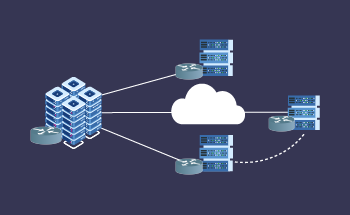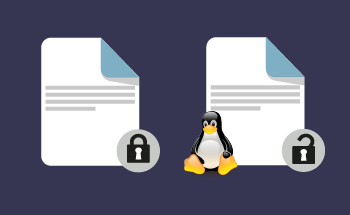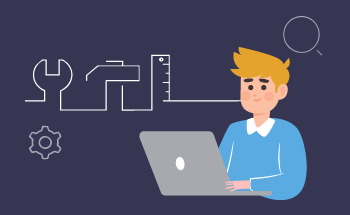7 Exciting Docker Project Ideas for 2023
09:52, 15.01.2024
Nowadays, the general approach to application development has noticeably changed compared to how it looked a few years ago. One of the major shifts in this sphere was caused by DevOps, affecting first and foremost the operational infrastructure. The cooperation of developers and operators has become the most common and arguably the most fast and efficient way of developing projects.
In this state of affairs, Docker comes into play.
At its core, Docker is containerization software, often referred to as a PaaS (Platform as a Service) tool. It enables the partitioning of applications and environments into smaller fragments that can operate independently of each other, each with dedicated pools of resources, preserving all the dependencies.
To give you a better idea of what you can do with Docker, in the following article we want to present you some 7 great ideas for projects built on Docker.
Advantages of Containers
Before jumping straight into some great Docker project ideas, it’s reasonable to throw a glance at what containers actually have to offer.
Containers are lightweight, standalone, and executable software packages that include everything needed to run a piece of software, including the code, runtime, libraries, and system tools. What they offer is a consistent and reproducible environment across different computing environments, making it easier to develop, deploy, and scale applications. Common uses of containers are encapsulation and isolation of applications, as well as ensuring that these run consistently across various environments, from development to testing to production.
Some of the container advantages include:
- Lightweight: Compared to virtual machines, containers are significantly more light. They need only the most vital OS processes and dependencies needed for a particular task. They aren’t heavy-weight entities with their own OS and a hypervisor. In addition to this, they have a highly optimized usage of hardware resources and are faster to start.
- Efficiency: Containers are widely considered an efficient solution for reducing the amount of resources needed to run projects since several multiplied instances of the same app can run on a single piece of hardware.
- Facilitated work for developers: From various points of view, containers are significantly less complex than virtual machines. With this, the eventual productivity of the developers' team may increase in various scenarios.
Advantages of Docker
After it was launched in 2013, Docker is now one of the most used container solutions, with “Docker” being almost a synonym for container. Let’s why you should actually use docker containers in particular.
- Optimized resource consumption: Docker has relatively low memory and other resource consumption, with a noticeable denser packaging.
- Quick software delivery: With docker developers have an easier time developing new versions of software more frequently, which makes the process of new features implementation more vivid.
- Portable apps: With the encapsulation offered by Docker, creating cross-platform and cross-operating system apps becomes much easier.
7 Ideas for Docker Projects in 2023
Some of the well-known docker projects include Moby, Kubernetes, and Containerd. However, the whole list of available docker projects is not limited to them, and below we want to show you some of the most attention-worth projects that can serve as an inspiration for every developer.
1.Docker craft
Docker craft is a Docker project that is used to host Minecraft servers on Docker containers. This allows the users to benefit from Docker in a variety of ways, omitting at the same time the necessity to use a virtual machine. The reliability and stability of this project are evidenced by the fact that relies on the same technology as the architecture of Heroku.
To deploy this project, you in the first place have to create a Dockercraft directory. Afterwards, you should clone the repo of Dockercraft there. Then, configure Docker-compose.yml indicating your version of Minecraft and the amount of available RAM.
What now remains is to launch the server with the command docker compose up.
2. RancherVM
RancherVM is a popular containers-as-service solution. What is special about it is that it allows to run Virtual Machines over containers (as opposed to the common practice of running containers over virtual machines). From this, you can extract numerous benefits, including:
- Isolation and security: When running virtual machines over docker containers, you obtain the possibility to combine the ability to package and distribute software provided by containers with the isolation and security offered by VMs. This is partially related to the fact that VMs are smaller-scaler entities, so fewer measures are required to fully protect them.
- Docker on-boarding: VM containers offered by RancherVM are a great way to provide a smooth transition to Docker to companies, which can otherwise require a long and complex preparation. This approach also allows you to run Windows virtual machines on infrastructure designed for Linux containers.
- KVM management: KVM lacks vSphere's robust management tools, but Docker can enhance it. By running KVM in Docker containers, VMs retain KVM's strengths while offering a Docker-friendly experience. This enables packaging VMs as Docker images, leveraging Docker Hub for distribution. Service discovery mechanisms for containers now apply to VMs, and tools like Rancher can manage VM workloads at scale.
3. Wine
A significant weak spot of Dockerized applications is their lack of cross-platformity. In other words, an application developed for Docker Windows cannot work on Linux. That is exactly the thing Wine was developed in mind with. This project allows running Windows applications on Linux as if nothing was wrong. What helps Wine to perform this task is the Wine compatibility layer. Wine includes Dynamic Video drivers and VirtualGL, which makes it work well with Nvidea video cards and drivers as well as Mesa drivers cards. Wine can be flexibly configured to suit various drivers.
4. Docker-Mon
Docker-mon is one of the numerous services for monitoring Docker images, based on blessed-contribute, a dashboard framework centered around the shell. With it, a user can get access to the entirety of basic requirements inside the shell.
The project is still in development and depends on the yet unreleased docker stats features. Therefore, it will likely require you to use a master build.
5. Passenger-Docker
Phusion Passenger is widely considered an important docker application, especially praised by Rails developers. The purpose of it is in the first place the creation of an environment for the developers to launch their apps with ease. Passenger-Docker is a docker project inspired by Physion Passenger.
What we have as the result is a suite of Docker images, that can be used as bases for web applications written in Ruby, Node.js, Python, or Meteor, greatly facilitating the creation of Docker images for web applications.
6. KubeVirt
KuberVirt is a Kubernetes add-on, allowing users to manage virtual machines, which creates possibilities for creating virtualization applications within Kubernetes. As you may know, Kubernetes was created for containers, not covering other kinds of infrastructure. KuberVirt solves this restriction by exploiting Kubernetes’ capability of VM cluster orchestration, using Custom Resource Definitions API to incorporate virtualization resources. With it, you’ll be able to use Kubernetes to launch, stop, and delete virtual machines as well as manage their scheduling.
7. Container Migration Tool (CMT)
Another good feature of docker containers is their portability. You can launch one on any system with Docker. However, natively Docker doesn’t offer a tool that would allow you to migrate containers between clusters in a network.
In turn, the Checkpoint & Restore (CR) features are rather new and not really accessible for all types of users, as users with less experience might often encounter errors with CR.
Container Migration Tool (CMT) was developed with the idea to overcome this limitation. It is an external command-line tool making the migration of Docker containers significantly easier.
Conclusion
Containers and Docker containers in particular can be a great tool for developing a wide range of possible projects. In particular, they are praised for optimized resource consumption, portability, quick deployment, and the possibility to migrate them easily. Among some of the most common docker projects, there are many more possible ones. In the article above we’ve provided you with a quick overview of some of the coolest projects that have ever been created using docker containers, and we hope that your project will sooner or later contribute to this list. Good luck!


